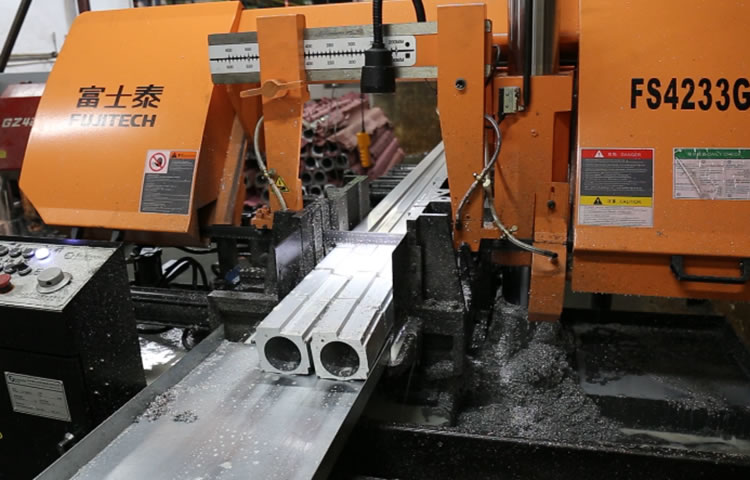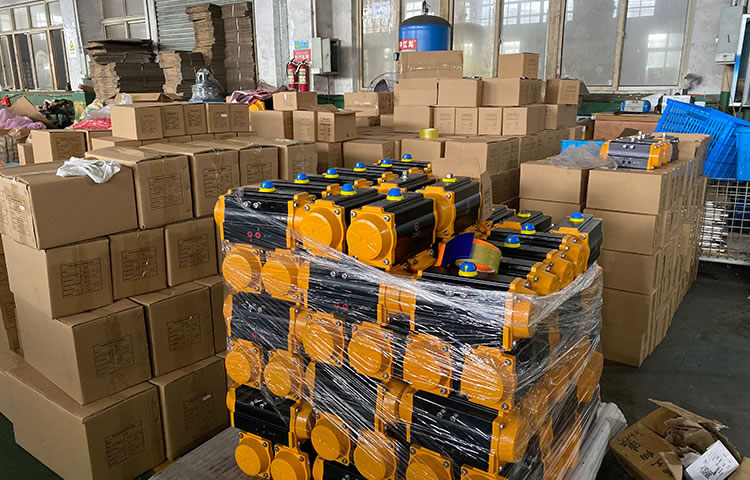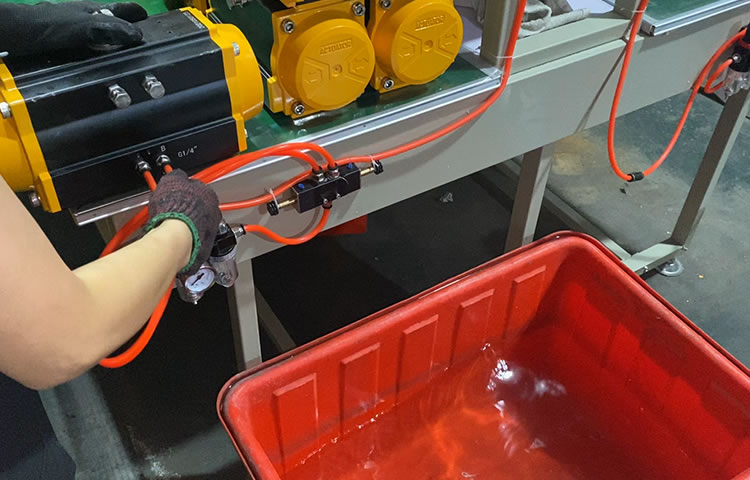Pneumatic Actuated Valve
Elevate Your Efficiency with Advanced Pneumatic Solutions.
Elevate Your Efficiency with Advanced Pneumatic Solutions.
Pneumatic valves are a type of control device called “pneumatically driven” that are used to control the flow of fluids, usually for liquid and gas control.
Air-operated valves are a type of control device called “pneumatically driven” that are used to control the flow of fluids, usually for liquid and gas control. An air-driven valve is an automatic control device that can change the flow or direction of fluid according to external control signals. Pneumatic valves generally come in four basic types: ball valves, slide valves, cone valves, and globe valves.
A pneumatic valve with an actuator is composed of an electric drive and pneumatic control. The electric drive provides power and the pneumatic control realizes the control function. Its working principle is: that when the external control signal changes, the electric drive converts the air pressure into force, and then controls the flow by controlling the size of the valve, thereby achieving the purpose of controlling the fluid.
The working principle of a pneumatic automation valve is that an electric drive converts air pressure into force, and then controls the flow by controlling the size of the valve, thereby achieving the purpose of controlling the fluid.
The control principle of pneumatic valves is to change the opening of the valve by controlling the air pressure of the electric drive, thereby changing the flow of fluid. When the air pressure changes, the opening of the valve will also change, thus changing the flow rate.
The structural characteristics of the air-powered actuated valve are: it is composed of electric drive and pneumatic control. The electric drive provides power, and the pneumatic control realizes the control function.
Pneumatic automation system valves generally come in four basic types: ball valves, slide valves, cone valves, and globe valves. Among them, the ball valve is a control device that can change the flow direction, the sliding valve can change the flow size, the cone valve can control the flow direction, and the stop valve can prevent fluid flow.
Pneumatic control actuated valves are widely used in industrial control, automobile manufacturing, air conditioning equipment, gas equipment, HVAC equipment, and other industries.
In the field of industrial control, pneumatic valves are used to control the flow and direction of water, oil, gas, and steam to meet different control requirements. In automobile manufacturing, pneumatic valves are used to control the car’s engine and exhaust system to control the car’s power performance. In the field of air conditioning equipment, pneumatic valves are used to control temperature and humidity in air conditioning systems.
The normal use and maintenance of pneumatic valves are important to the valve’s service life. First of all, when installing a pneumatic valve, you should pay attention to checking whether the valve’s bolts, gaskets, sealing rings, and other parts are firmly installed. Secondly, check the air pressure of the valve regularly to ensure that the air pressure is appropriate to ensure the normal operation of the valve. In addition, the sealing performance of the valve should be checked regularly to ensure that the sealing performance of the valve is good.
The safe operation of pneumatic valves is important to ensure personal safety and equipment safety. First of all, you should ensure that the pneumatic valve undergoes a safety inspection before operation to ensure that the valve’s structure is intact and that the valve’s connections are not loose. Secondly, when operating pneumatic valves, you should avoid touching the valve with your fingers to prevent injury. In addition, you should also pay attention to wearing safety equipment, such as safety helmets, safety shoes, etc., to prevent injuries.
Pneumatic control valves can be roughly divided according to different valves: pneumatic ball valves, pneumatic butterfly valves, pneumatic gate valves, pneumatic stop valves, etc. The first two are angular stroke switching methods, and the latter two are straight stroke switching methods.
Common quarter-turn pneumatic devices can be divided into two categories: rack-type pneumatic actuators and fork-type pneumatic actuators. Both essentially use air pressure to drive the operation of the valve, but the fork-type pneumatic device is superior to the rack-type pneumatic device.
The fork-type pneumatic device is small in size, has low internal friction, and consumes less. At the same time, the service life is much longer than that of the rack type and can reach more than 1 million times.
1. The valve should be stored in a dry and ventilated room, and both ends of the passage must be blocked.
2. Valves stored for a long time should be inspected regularly, dirt should be removed, and anti-rust oil should be applied to the processing surface.
3. After installation, regular inspections should be carried out. The main inspection items are:
(1) Wear of sealing surface.
(2) Wear of the trapezoidal thread of the valve stem and valve stem nut.
(3) Whether the packing is out of date and ineffective. If it is damaged, it should be replaced in time.
(4) After the valve is repaired and assembled, a sealing performance test should be carried out.





Based on a wealth of experience, YUECHI has the knowledge to provide reliable and appropriate automotive solutions for valve applications. General technical attributes for product selection include:

valve type, operating pressure, valve size, sealing type(hard sealed and soft sealed options) ,media and operating temperature

Double-acting and spring-return configurations (normally closed and normally open options)

Double-solenoid or single-solenoid, supply voltage, explosion-proof type

Basic or explosion-proof type

Current signal, air supply signal, electric-pneumatic converters, explosion-proof grade

Air filter, Solenoid Valve, Limit Switches Box

De-clutch able wormgear

Accessories of designated brand